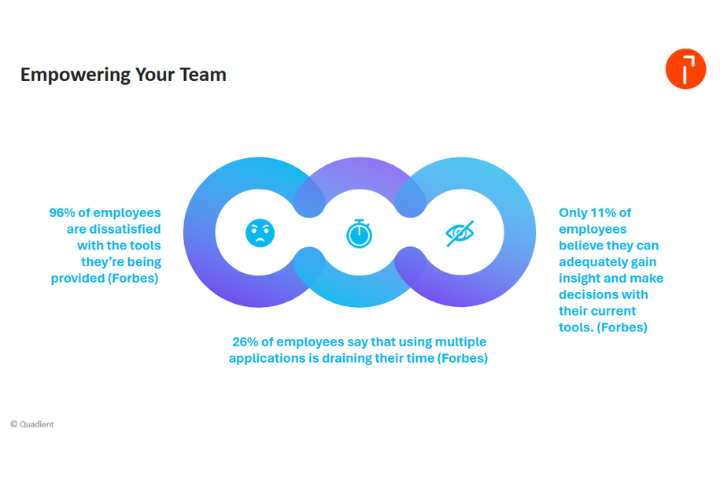
Sales is the #1 financial statement that gets the most attention, closely followed by net income. Even if the figures on paper are impressive, they don’t necessarily represent cash on hand if you operate on an accrual basis. Instead, these numbers often reflect potential revenue and net income from cash flow that hasn’t occurred—assuming you'll be paid.
Because of the inherent element of bad debt risk, accounts receivable and related key metrics should be in the spotlight as much as your sales figures. Average accounts receivables collection period is a Key Performance Metric (KPM) you should calculate and understand to assess and improve accounts receivable efficiency.
In this blog, you'll learn:
- What is the average collection period
- How to calculate the average collection period
- What is a good average collection period
- Assessing the average collection period
- Cons of a low average collection period
- Cons of a high average collection period
- How to improve the average collection period
What is the Average Collection Period?
This metric tells you how long it takes, after a credit sale, to get your money. You might also hear the benchmark referred to as days sales in accounts receivable or days sales outstanding (DSO).
To crunch the AR collection period metric, you need to know credit sales and average AR balance for the period. Alternately, you can fast track this metric and use the AR turnover ratio as your starting point if you’ve already run that number.
Get Paid 34% Faster With 3 Collection Workflows From Our Collections Playbook
How do I Calculate AR Collection Period?
There are two ways to calculate the metric. For this example, let's assume we’re calculating on an annual basis, although you can run the metric for other intervals.
Data inputs
- Net credit sales: £500,000
- Average AR balance: £50,000
- AR turnover: 10 (Net credit sales ÷ average AR balance)
- Days in the period: 365 (some people prefer to use 360)
AR Collection Period Calculation 1:
(Average AR ÷ net credit sales) x 365 = (£50,000 ÷ £500,000) x 365
(.1 x 365) = 36.5 days
AR Collection Period Calculation 2:
365 ÷ AR Turnover Ratio
365 ÷ 10 = 36.5 days
What is a good average collection period?
As a general rule, companies prefer a shorter average collection period, as it indicates that the organisation efficiently collects its receivables. Typically, 60 days or less is considered a low Average Collection Period and indicates that a company has higher liquidity.
However, a low Average Collection Period may also indicate that your credit terms are too strict. This can potentially lead to customer churn, with customers choosing vendors that supply more lenient terms.
Factors to consider when assessing DSO or average collection period:
- Credit terms. If your typical credit terms are net 30 and your DSO is 35, that’s in alignment. If your terms are net 15 or net 60, with 35 DSO, there’s a disconnect to explore.
- Industry average. DSO varies by industry, and if yours is drastically lower (or higher), it can be a sign that you’re not optimizing revenue or cash flow opportunities.
- Seasonal shifts. DSO as an annual look-back smooths out seasonal variances and cyclical fluctuations and gives you the big picture. Shorter intervals may be misleading.
Featured Resource: The AR Collections Playbook

Lower AR Collection Period Is Usually Better
Whatever turn of phrase you prefer, AR collection period/DSO tell you how many days, on average, it takes to get money from your customers. The lower the number, the faster you’re collecting. It seems like you’d want to see this at a minimum, but maybe not.
Problems With a Very Low AR Collection Period
Generally, DSO of 45 or less is acceptable for companies transacting at net 30, but what if your AR collection period is 25-30 days? You might assume your AR department is on the ball, invoicing on time, and following up on payments. You might be right or it could be a red flag.
Perhaps AR and collections are overly aggressive. Harsh treatment of customers might keep cash flowing in for now, but those customers could be ripe for the picking by competitors that aren’t so pushy. Another consideration is whether loosening credit terms a little might encourage more sales.
Problems With a Very High AR Collection Period
Lagging payments are the obvious implication of a large AR collection period number, but it’s important to investigate the cause. Some drivers behind excessive DSO could be:
- Overly slow invoicing. Is your accounting staff lagging with billing?
- Barriers to payment. Do you offer ACH, wire, and credit card payments?
- Lack of communication. Do customers understand their payment terms?
- Customer service issues. Are clients unhappy and paying late intentionally?
- Sales issues. Are salespeople out of the loop or pursuing risky deals?
As with any metric, the data itself is important, but so is understanding what's driving the numbers. Information without insight isn't actionable!
Tracking AR collection period and other metrics can be complex and time consuming. Far too many businesses crunch KPIs manually. Automating AR management eliminates manual processes, offers greater insight from predictive analytics, and gets you paid faster.
How can you improve the average collection period?
For organisations looking to reduce their Average Collection Period, there are several key steps that can be taken.
- Review and revise credit policy – setting stricter terms can limit the number of days that an invoice is allowed to be outstanding. It may also be necessary to limit the number of customers allowed to pay on credit, encouraging more cash sales.
- Automate invoicing – Automating time-consuming and tedious tasks like invoice presentment ensures that invoices are sent directly to a customer once they’ve been generated in your ERP. This prompt delivery helps foster faster payment.
- Zero-touch collections – By transitioning to a customer self-service payment portal, customers can make payments instantly once an invoice is received. That means no more delays waiting for a paper check to be mailed or to clear the bank. In addition, digital reminders can be sent directly to the customer until payment is made.
- Smart dispute resolution – A self-service portal also allows customers to raise disputes or ask questions about their invoices quickly. These disputes and questions are then analysed by the software using AI and machine learning, assessed for severity, and routed to the appropriate team member for resolution. This eliminates back-and-forth phone calls, and leads to quicker resolution of disputes, and faster payment.
- Predictive Analytics – Using predictive analytics, specifically those powered by AI and machine learning, allows you to quickly understand customer payment behaviour and make predictions about when payments are likely to be received in the future. This allows your team to prioritise high-risk accounts in their collection strategy.
Tracking AR collection period and other metrics can be complex and time consuming. Far too many businesses crunch KPIs manually. Automating AR management eliminates manual processes, offers greater insight from predictive analytics, and gets you paid faster.






